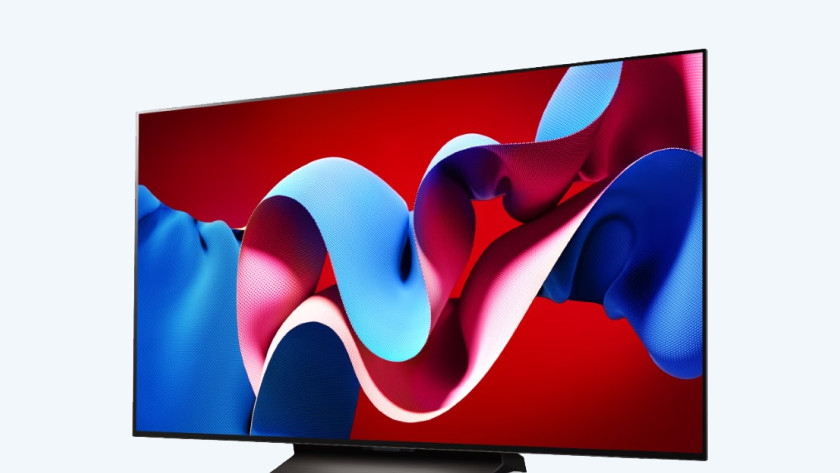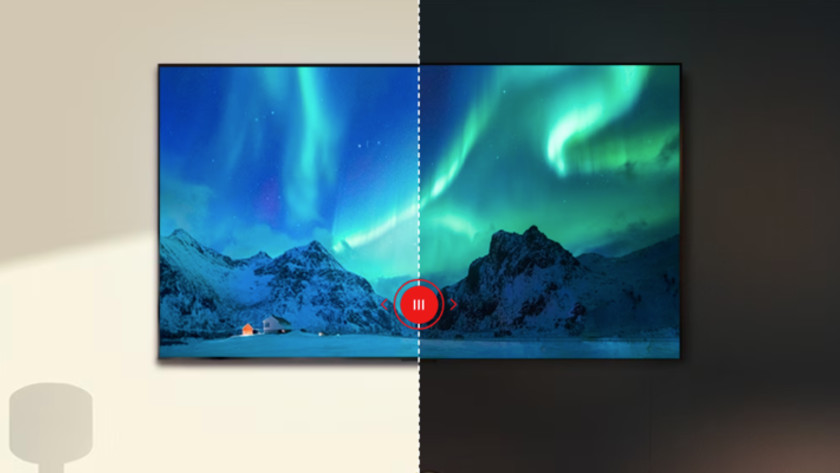
Compare an OLED television to an LED television
The main differences between an OLED and LED TV
| OLED television | LED television | |
|---|---|---|
| Do you want the most realistic colors? | Yes | Yes |
| Do you watch a lot of movies and series with dark scenes? | Yes | No |
| Do you watch TV in bright daylight or artificial light? | No | Yes |
| Do you want the same image quality from every part of the couch? | Yes | No |
| Are you looking for a small television? | No | Yes |
The technical differences between OLED and LED

OLED
An OLED television has a screen that lights up by itself. You can see it as a poster that has millions of pixels on it. Those pixels light up in red, blue, green, or white. The OLED television doesn't need backlight, so the TV is flatter and lighter. Another result is that an OLED TV shows perfect black. If a part of the screen has to be dark, the TV turns off the pixels in that area. Because the pixels light up individually, you can enjoy a clear image that displays lifelike colors.

LED
An LED television screen doesn't light up by itself. The TV builds an image by sending the light via the backlight and stopping it. The light comes from rows of white LED lights on the border or the back of the screen. The television creates a black or dark image by stopping as much light as possible. As a result, you could see light seeping through the darkest part of the screen, because black isn't really black. That also influences the color representation. An LED television can't display color as well as an OLED television can.
Looking at OLED vs LED

OLED
You can benefit from the advantages of OLED technology with everything you watch. Your weekly soccer game, a Netflix series, or the latest episodes of your favorite soap opera; they all pop with a lot of color and detail. When you're watching movies with dark scenes, the OLED really shows its strength. If you put on a Harry Potter movie, you can see things happen in the shadows that you didn't notice before. You have the same image quality from every spot on the couch, because an OLED television has perfect viewing angles.

LED
An LED television stands out in brightness. That's useful if you watch a lot of TV during the day, or in brightly-lit room. You can see what happens on the screen well. A disadvantage of that brightness is that dark scenes in movies and series don't show up as well. Light always comes in, even if the image should be black. A television with local dimming limits that slightly. The image of an LED television isn't as nice from every angle. If you look at the TV sideways, the colors and brightness of the image decreases.
Do you choose an OLED TV or an LED TV?
An OLED television displays black levels perfectly, the colors are lifelike, and the image buildup is fluent. These televisions all have a screen with 4K or 8K resolution and are extremely suitable to watch HDR movies and series. If you want a small television, it's best to choose an LED television. They come in all shapes and sizes and perform better in brightly-lit rooms as well. Do you want to see the differences between an OLED and LED television with your own eyes? One of our employees is happy to show you the differences in one of our stores. Click the button below for an overview of all Coolblue stores.


